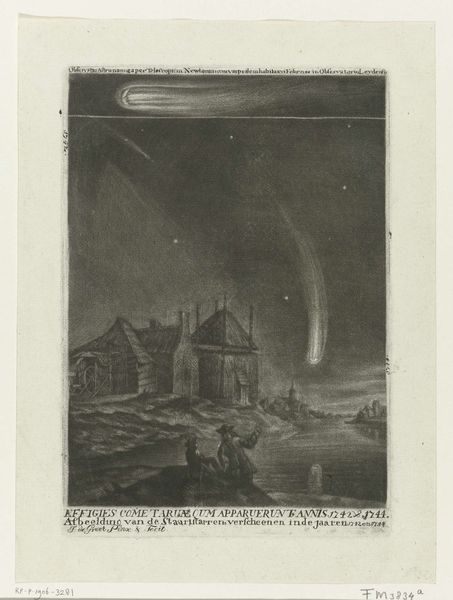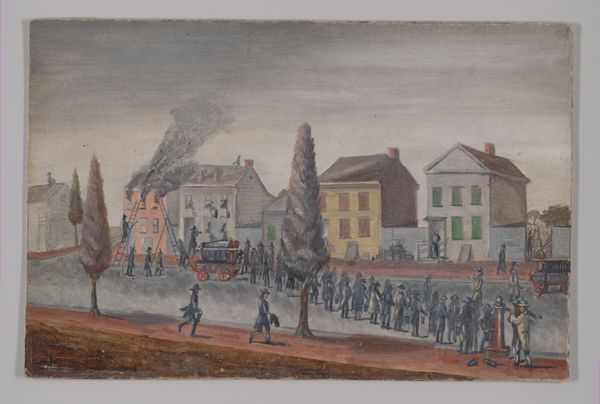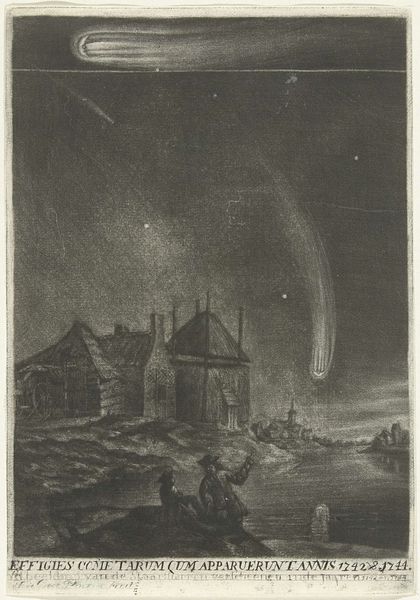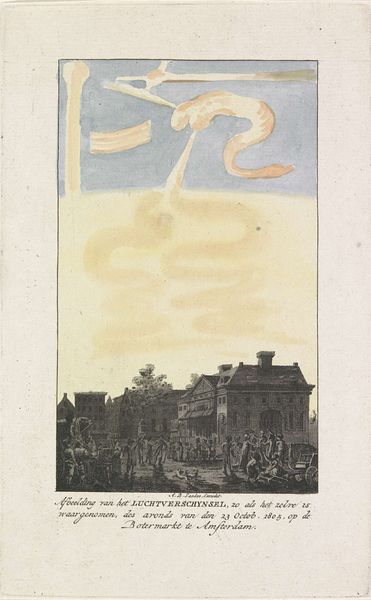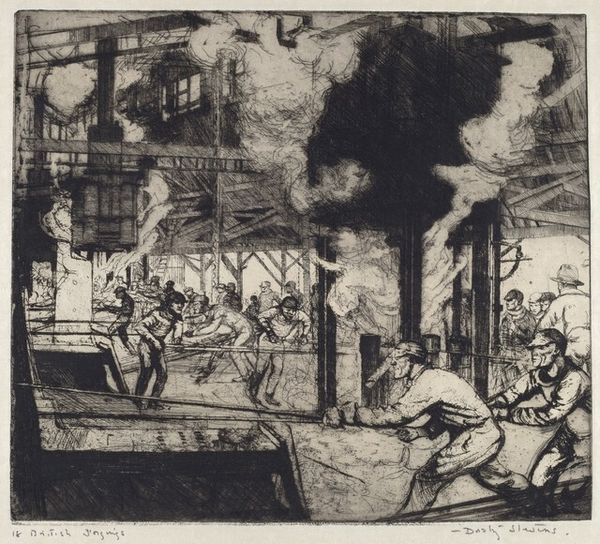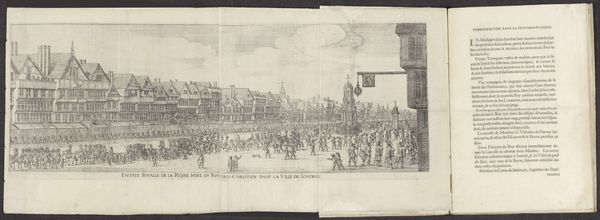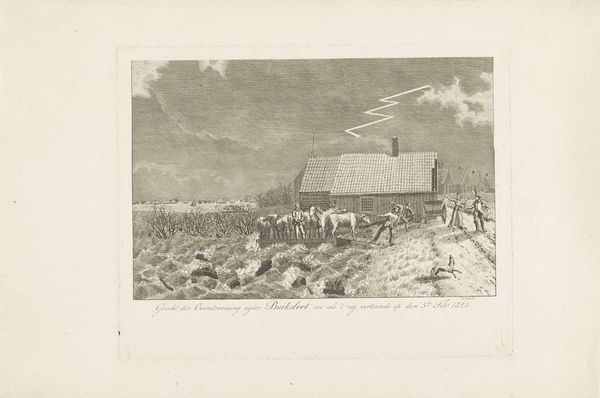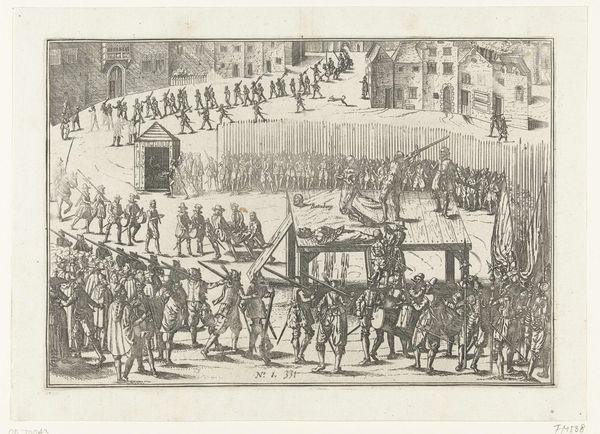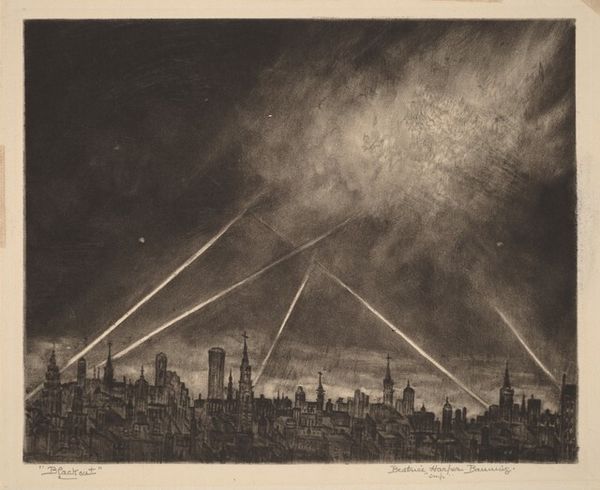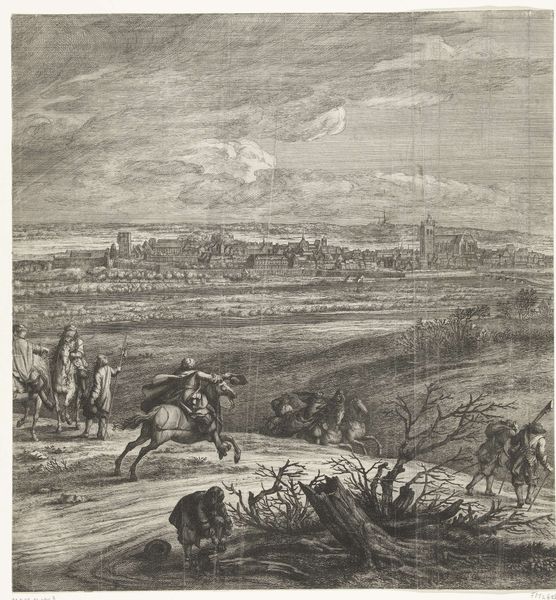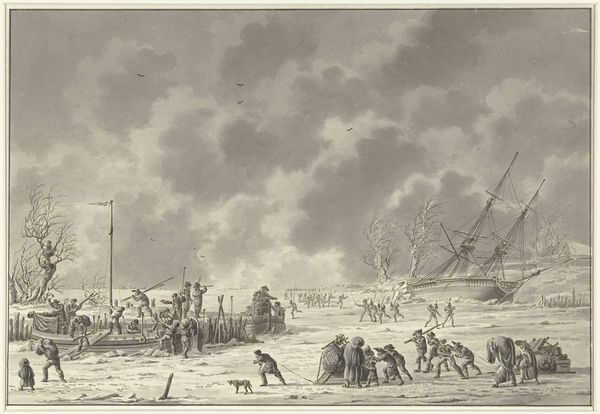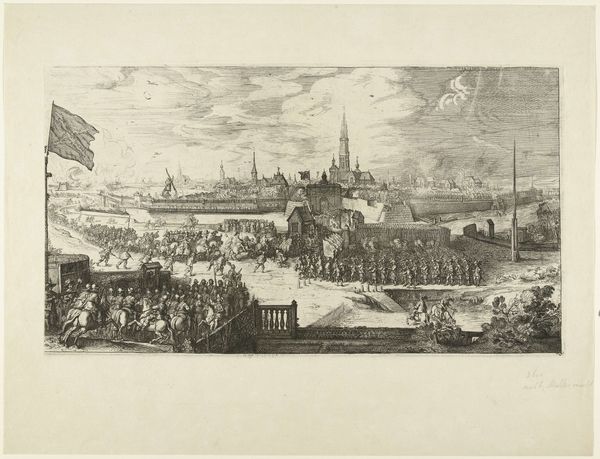
mixed-media, coloured-pencil, print, watercolor
#
mixed-media
#
coloured-pencil
#
water colours
#
narrative-art
# print
#
watercolor
#
coloured pencil
#
cityscape
#
mixed media
#
realism
Dimensions: Image: 331 x 443 mm Sheet: 438 x 561 mm
Copyright: National Gallery of Art: CC0 1.0
Editor: Here we have Ernest J. Hopf's "Night Shift," created in 1943 using mixed media, including colored pencil. The figures heading towards the lit factory…there's something both determined and a bit ominous about the scene. What captures your attention in this print? Curator: The light. The artificial illumination is so dominant. Given that it’s 1943, smack in the middle of the Second World War, the image speaks to the industrial war effort. How do you think the image would be different without those beams of light? Editor: Oh, drastically! Without them, it would be a somber, subdued cityscape. They militarize the scene and bring this… hyper-focus onto the factory. So this is less about the individual workers and more about this industrialized effort? Curator: Exactly. Consider the socio-political climate; artists were often tasked with visually bolstering morale and valorizing labor. Hopf gives us something less celebratory, something that hints at the dehumanizing effects of industry and war, doesn't it? Editor: I see that now, in the anonymous figures. It makes me wonder about the intended audience at the time. Were people aware of that double meaning? Curator: That's a crucial question. We must always ask how such imagery was used, received, and potentially resisted by various audiences. Art serves as a barometer for anxieties within society. Editor: Thinking about the museum’s role, showcasing pieces like "Night Shift" sparks conversations about how industry shapes lives, and how war influences artistic production. Curator: Indeed. And hopefully encourages visitors to consider the stories behind these images, and the broader historical narrative in which they are embedded. It serves to remind us of art’s power as an agent of communication and of the necessity of reading it critically.
Comments
No comments
Be the first to comment and join the conversation on the ultimate creative platform.
